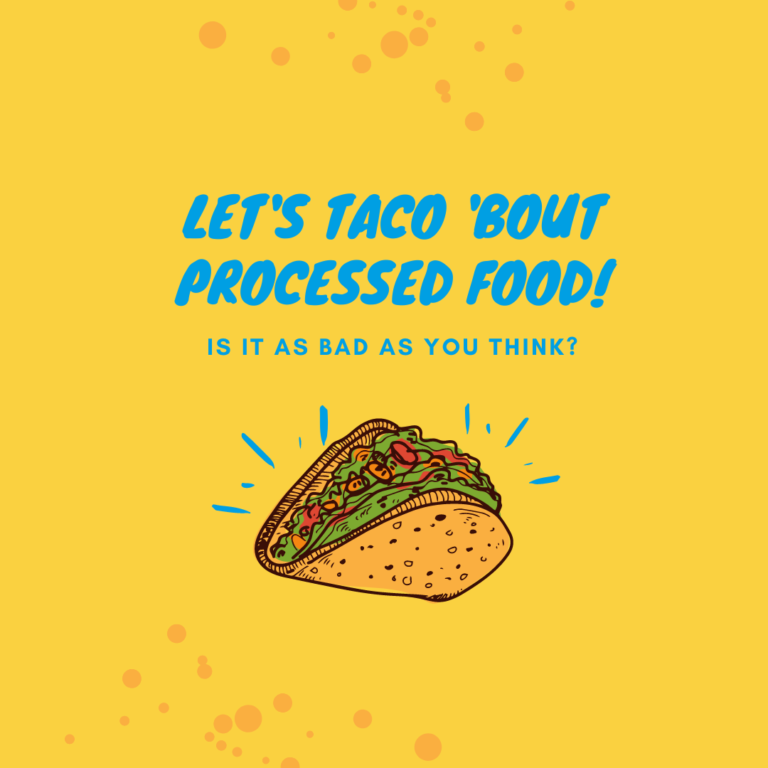Has anyone ever told you to “eat less processed food”?
It is possible that the advice was in the context of “you should choose more ‘healthy’ foods”. However, did you know that tofu is considered a highly processed food and canned beans are “processed foods”
Processed or Over-processed?
Lately, you may have heard the term “ultra-processed food.” The level of processing is what determines whether or not a food is ‘over-processed’. You can count on front of package label to determine whether a food is a good choice or not. However, the methods used to assess both ‘healthy’ or ‘over-processing’, they do not always align with reality, nor do they always result in better quality nutrition
According to Institute for Health Measurement and Evaluation Better nutrition could save one in five deaths worldwide. Many organizations around the world use various food classification systems to try to help consumers identify “healthy foods” (tip: see a registered dietitian for personalized answers to this question). The NOVA food classification system is one such tool.
Classification NOVA
The NOVA The system divides all foods into four groups:
- Group 1 – Unprocessed or minimally processed foods
- Group 2 – Processed cooking ingredients
- Group 3 – Processed foods
- Group 4 – Highly processed food and drink products
They classify Group 4 as “formulations made mostly or entirely from food-derived substances and additives, with little or no Group 1 food intact.” In this group they group soft drinks, sweet or salty packaged snacks. However, the system also classifies other foods such as baby formula, tofu and veggie burgers as highly processed.
Restrictions on tags
In my opinion, there are huge limitations with this tool. The constant messages you hear in the media that “unprocessed or minimally processed foods are always ‘healthier'” are not as clear-cut as they seem. For example, the popular Wheat Thins cracker and Corona beer are rated 3. Tofu, flavored corn chips, high-fiber breakfast cereals, and a packaged snack cake are equally classified as either “processed” or “ultra-processed foods.” However, a high-fat burger is ranked as Group 1, while a frozen veggie burger is ranked as Group 4. This system suggests that a beef burger (a particular brand made with high-fat beef) is far superior to a bean burger or a veggie burger made with soy. Both can fit into your diet and have advantages and disadvantages. And, in fact, all of these items are indeed food.
What is “healthy eating”?
In addition to this push to determine how “processed” a food is, the use of the word “healthy” on the front of the package label is a matter of debate. The FDA has proposed a new definition for the use of the word “healthy” on food packaging and proposed new requirements for food manufacturers to use the term.
Under these new terms, “healthy” products should:
🍎 Contains a certain amount of food from at least one of the main food groups or subgroups (fruits, vegetables, dairy).
🍎 Stick to specific limits for certain nutrients, such as saturated fat, sodium, and added sugars. The limit is based on a percentage of the daily value (DV) for the nutrient. This varies by food and food group. The limit for sodium is 10% of the DV per serving (230 milligrams per serving.
Food is personal and complex
I shake my head when I learn more about rating systems that try to create an “eat this, not that” list. Food is very individual. So many factors influence what and how people eat. There are cultural traditions that influence choices and preferences. Plus, everyone has a different budget and food storage system at their disposal. Where you live affects what you eat. Region of the country or world and proximity to certain grocery stores, food markets and food all affect food choices.
On top of all that, there are your personal health needs. What is he doing yours body’s need for nutritional support? What kind of food intolerances do you have or what nutritional treatments do you use to manage the disease? How old are you? Etc.
Finally, I will continue to argue that it is the overall dietary pattern affecting health. Not one food or food group. You could choose a high-fat, high-sodium, high-sugar food one day and skip them the next. Or you could eat something high in sugar or sodium or fat every day, in a small portion. It’s about balancing the dishes and balancing the week with other foods that are much more nutrient dense.
Goes on…
